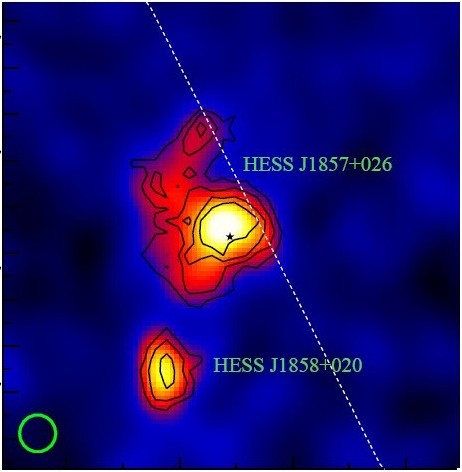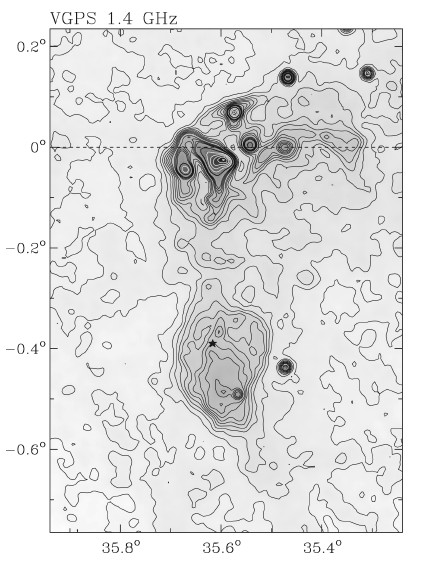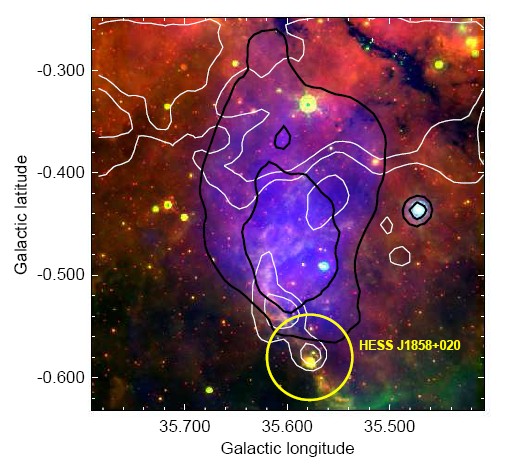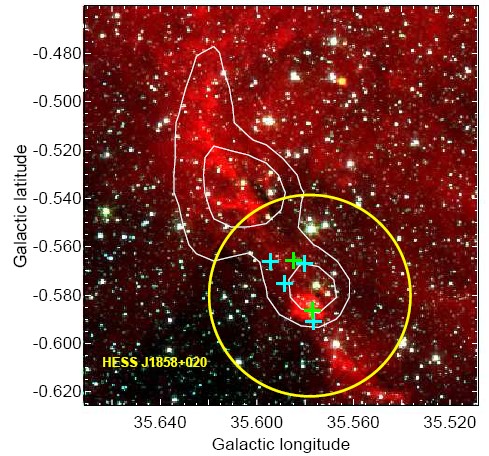News about HESS J1858+020
January 2010

HESS J1858+020 is among the sources discovered by H.E.S.S. in its survey of the Galactic plane. Unlike most other sources, HESS J1858+020 represents a rather compact emission region of about 5' in size. Is features a relatively hard gamma-ray spectrum, extending beyond 10 TeV. Lacking any obvious counterpart, the source was classified as "unidentified" at the time of the discovery.
New clues regarding the nature of HESS J1858+020 come from two recent publications: Green (2009) reports on the re-classification of the extended radio source G35.6-0.4 as a supernova remnant, based on VLA radio data at 1.4 GHz which resolve the source, based on the non-thermal spectrum of the radio emission, and based on the lack of infrared emission. G35.6-0.4 (Fig. 1, Fig. 2) extends from the location of HESS J1858+020 towards the Galactic plane. Green (2009) estimates the age of the remnant to about 30000 years, and its distance to about 10 kpc, both numbers with large uncertainty. Paron and Giacani (2009) report the presence of a molecular cloud of about 5000 solar masses at edge of the remnant G35.6-0.4, coincident with the H.E.S.S. gamma-ray source (Fig. 2, Fig. 3). The cloud is visible in 13CO radio data, selecting a velocity range 51 to 59 km/s, corresponding to the estimated distance to G35.6-0.4.
The implied scenario is then a supernova remnant which illuminates a nearby molecular cloud where gamma rays are produced by interacting protons accelerated in the remnant (e.g. Gabici et al. 2009). The emission from the remnant itself is too faint to be detectable, but the 5000 solar mass cloud boosts proton interaction rates. If this interpretation is correct, the system would demonstrate proton acceleration by supernova remnants. However, an alternative explanation could be the formation of massive stars inside the cloud, which in their various stages of evolution could also accelerate particles. Analyzing Spitzer infrared images, Paron and Giacani (2009) indeed find evidence for star formation inside the cloud (Fig. 3).
Reference: "H.E.S.S. VHE gamma-ray sources without identified counterparts", H.E.S.S. collaboration, F. Aharonian et al., arXiv:0712.1173 and Astron. Astrophys. 477 (2008) 353-363


